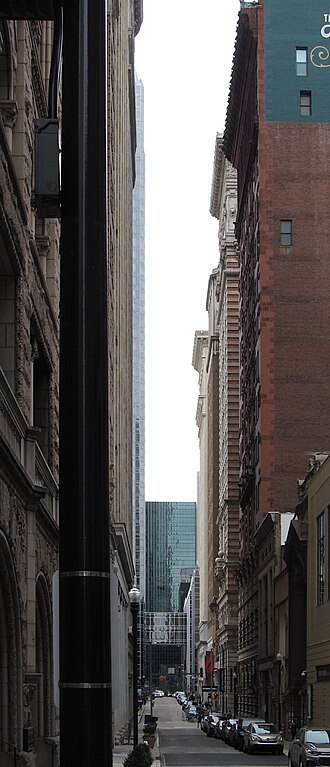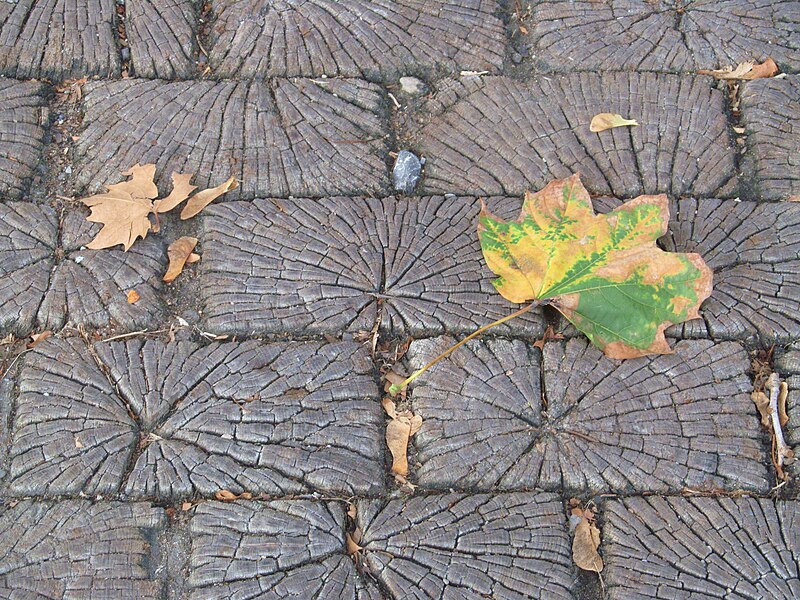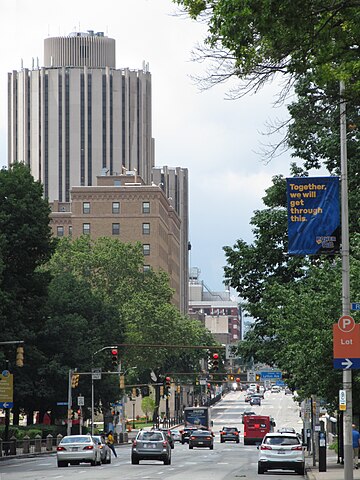
The Boulevard, as it’s known in the neighborhood, is Pittsburgh’s broadest commercial street—which strikes out-of-towners as absurd, but Pittsburgh has never been a city of broad streets. The breadth comes from the history of the street: when streetcars ran in Brookline, they ran in a separate right-of-way in what is now the middle of the street, with a narrow lane for automobiles on each side of the tracks—just like Broadway in Dormont today, where the Red Line cars still run. That history also accounts for the Boulevard’s other peculiarity: unlike most business streets, it has almost all the businesses lined up on one side of the street, with the other side more residential.
In every way this is an eclectic street. There’s a high occupancy rate in the storefronts, but very few chains are here, giving the neighborhood an unusually rich collection of odd little one-off shops. The architecture is also eclectic: in one block we can see everything from the beginning of the twentieth century to twenty-first-century International Style revival.














